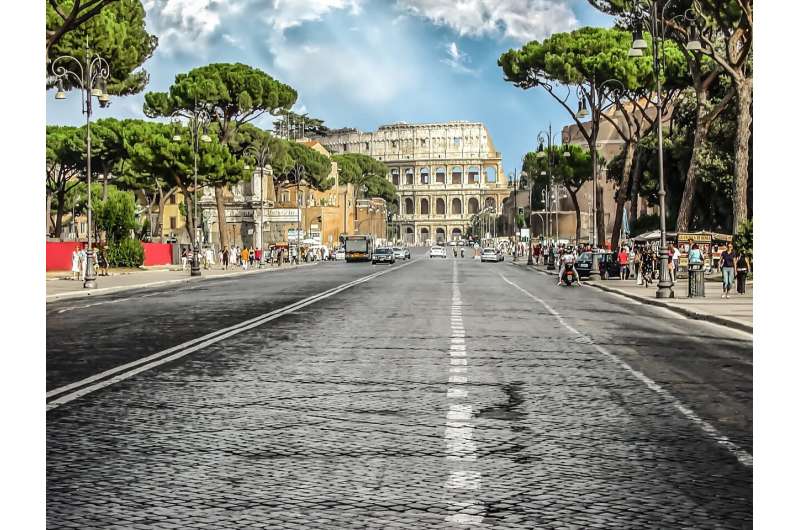 Credit: Pixabay/CC0 Public Domain
Credit: Pixabay/CC0 Public Domain
A new high resolution digital dataset and map—named Itiner-e—of roads throughout the Roman Empire around the year 150 CE is presented in research published in Scientific Data. The findings increase the known length of the Empire’s road system by over 100,000 kilometers.
At its height in the second century CE, the Roman Empire included over 55 million people and stretched from modern day Britain to Egypt and Syria. Although a network of roads throughout the Empire facilitated its development and maintenance, it remains incompletely mapped and existing digitizations are low resolution.
Tom Brughmans, Pau de Soto and Ad…
 Credit: Pixabay/CC0 Public Domain
Credit: Pixabay/CC0 Public Domain
A new high resolution digital dataset and map—named Itiner-e—of roads throughout the Roman Empire around the year 150 CE is presented in research published in Scientific Data. The findings increase the known length of the Empire’s road system by over 100,000 kilometers.
At its height in the second century CE, the Roman Empire included over 55 million people and stretched from modern day Britain to Egypt and Syria. Although a network of roads throughout the Empire facilitated its development and maintenance, it remains incompletely mapped and existing digitizations are low resolution.
Tom Brughmans, Pau de Soto and Adam Pažout and colleagues created Itiner-e using archaeological and historical records, topographic maps, and satellite imagery. The dataset includes 299,171 kilometers of roads—an increase from a previous estimate of 188,555 kilometers—covering almost four million square kilometers.
The authors attribute this increase in road coverage to higher coverage of roads in the Iberian Peninsula, Greece and North Africa and to the adapting of previously proposed road routes to fit geographical realities. This includes allowing roads crossing mountains to follow winding paths rather than direct lines. Itiner-e comprises 14,769 road sections, with 103,478 kilometers (34.6%) classified as main roads and 195,693 kilometers (65.4%) as secondary roads.
The authors report that the precise locations of only 2.7% of the roads are known with certainty, while 89.8% are less precisely known, and 7.4% are hypothesized.
The authors suggest that Itiner-e represents the most detailed and comprehensive openly accessible digitization of the Empire’s roads and that it also highlights gaps in current knowledge of the road system.
They note that Itiner-e cannot show changes in the road system over time and that future research is needed to investigate this throughout the Empire. They propose that Itiner-e could be used in future research investigating the influence of Roman roads on connectivity, administration, migration, and disease transmission in the Empire.
More information: Tom Brughmans, Itiner-e: A high-resolution dataset of roads of the Roman Empire, Scientific Data (2025). DOI: 10.1038/s41597-025-06140-z. itiner-e.org/
Citation: Digital map increases Roman Empire road network by 100,000 kilometers (2025, November 6) retrieved 6 November 2025 from https://phys.org/news/2025-11-digital-roman-empire-road-network.html
This document is subject to copyright. Apart from any fair dealing for the purpose of private study or research, no part may be reproduced without the written permission. The content is provided for information purposes only.